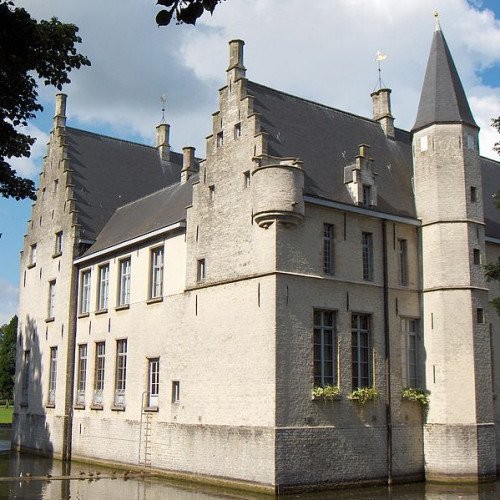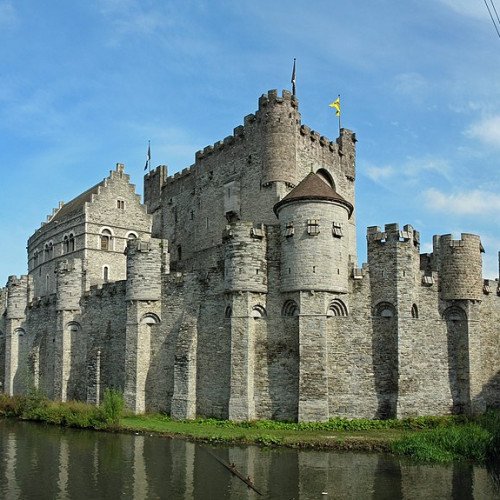Castles of "Belgium" KASTEEL CORTEWALLE vs GRAVENSTEEN

KASTEEL CORTEWALLE
Cortewalle Castle (Dutch: Kasteel Cortewalle) is a moated castle in Beveren in East Flanders, Belgium. The location was called Ten Wallen, which became in French Cour-ten Walle, hence the name Cortewalle. The castle dates back to the 15th century, and is one of the oldest in the Waasland. It is built of white sandstone, in Flemish Renaissance style. Until the 17th century it was in the possession successively of the house of Triest. It was sold in 1671 to Joannes Francis Goubau and passed to their heirs the family de Brouchoven de Bergeyck. The house of Brouchovens sold it to the municipality of Beveren, who use it for the storage of the extensive and important De Bergeyck archives.
Statistics for this Xoptio

GRAVENSTEEN
The Gravensteen (Dutch; literally "Castle of the Counts") is a medieval castle at Ghent, East Flanders in Belgium. The current castle dates from 1180 and was the residence of the Counts of Flanders until 1353. It was subsequently re-purposed as a court, prison, mint, and even as a cotton factory. It was restored over 1893–1903 and is now a museum and a major landmark in the city. After ceasing to be the residence of the counts of Flanders, the castle entered a decline. It was used as a court and prison until the 18th century. From 1353 to 1491, it was the site of Ghent's mint and private buildings were later constructed on or around the Medieval remains. During the Industrial Revolution, the Gravensteen was converted into a cotton mill by an industrialist who purchased the site. It was even scheduled for demolition. Parts of the castle were bought up gradually by the City of Ghent which began a major restoration in a romanticising Gothic style between 1893 and 1907 under the architect Joseph de Waele. De Waele was inspired the approach of the French architect Eugène Viollet-le-Duc and attempted to restore the castle to its imagined appearance in the 12th century. Many details added during this period, such as the flat roofs and the windows of the eastern outbuilding, are not thought to be historically accurate. The Gravensteen was the centrepiece of the Ghent World Fair of 1913 during which the city centre was significantly reshaped. It remains open to the public.